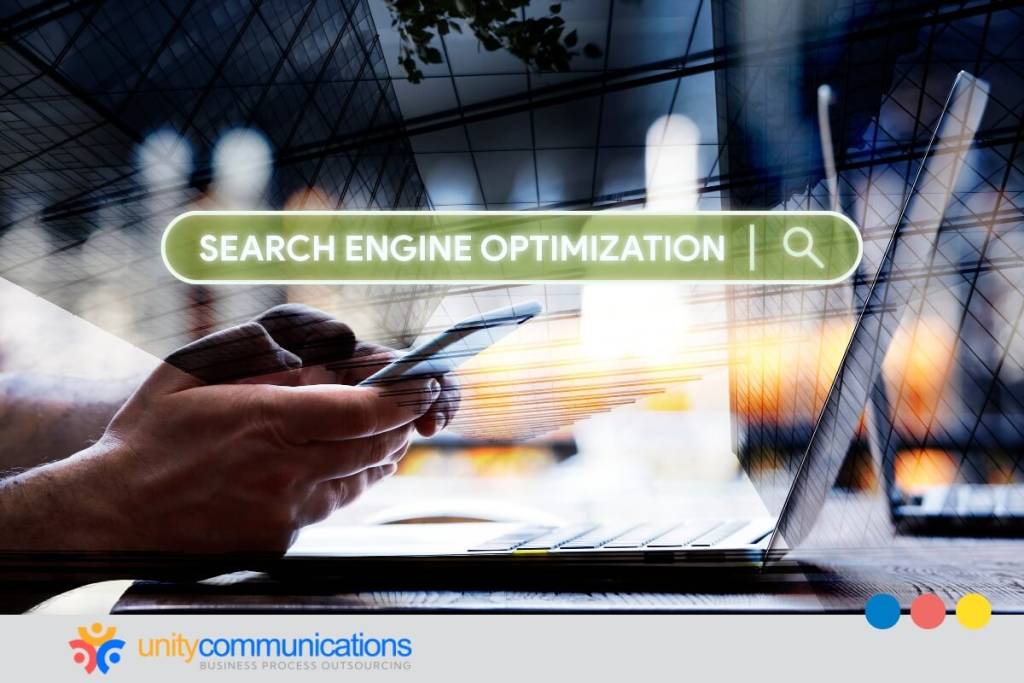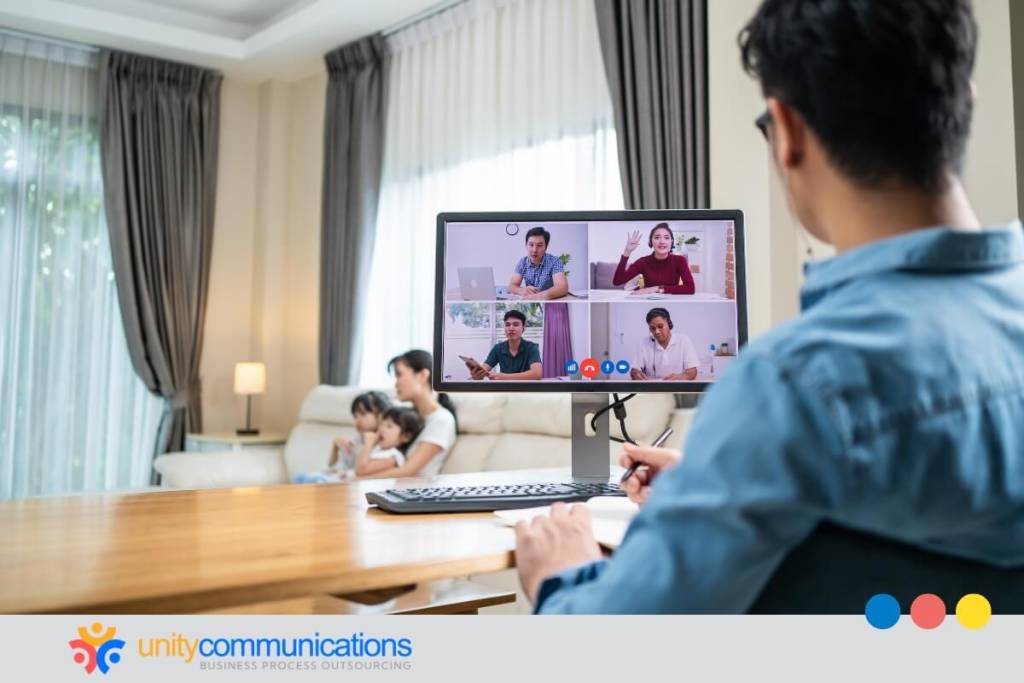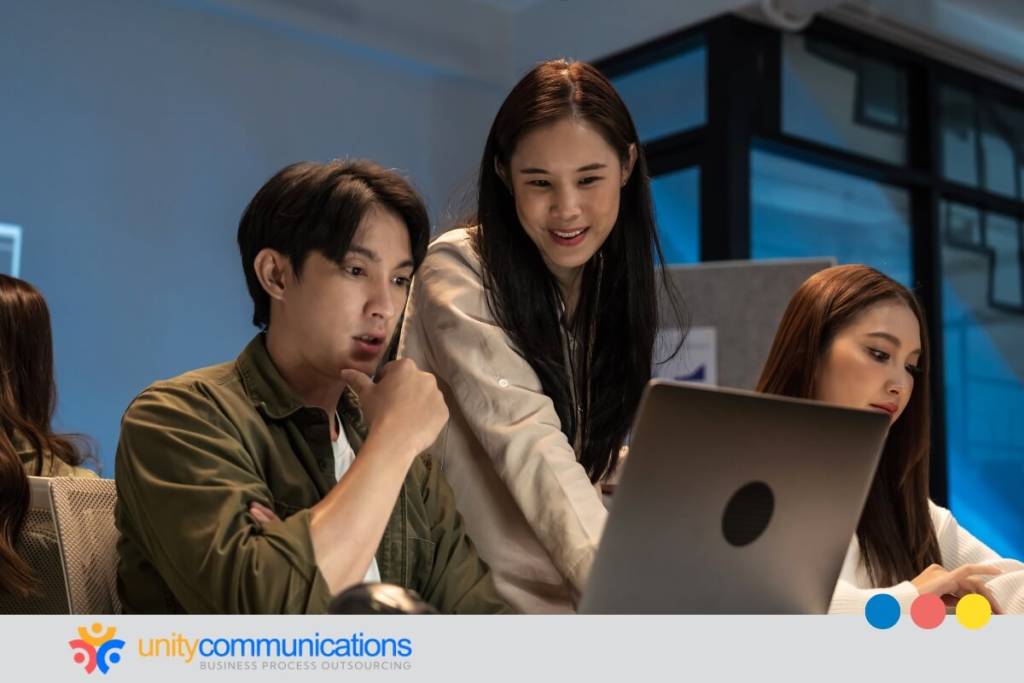Table of Contents
Visual content isn’t just eye-catching, it’s a powerful SEO asset. Posts with visuals get 94% more views than text alone. When you pair both, retention jumps by 65%.
Images enhance the user experience and supercharge search engine optimization (SEO). They can skyrocket your site’s visibility, traffic, and engagement. But not all visuals deliver results. If your images aren’t optimized, they can slow your site, hurt rankings, and miss the mark with search engines.
This is where business process outsourcing (BPO) shines. Third-party experts can elevate image quality, optimize alt text, and leverage search optimization techniques while reducing operating costs.
Read below to discover the benefits of BPO in optimizing for image search and different visual SEO strategies.
Understanding visual SEO
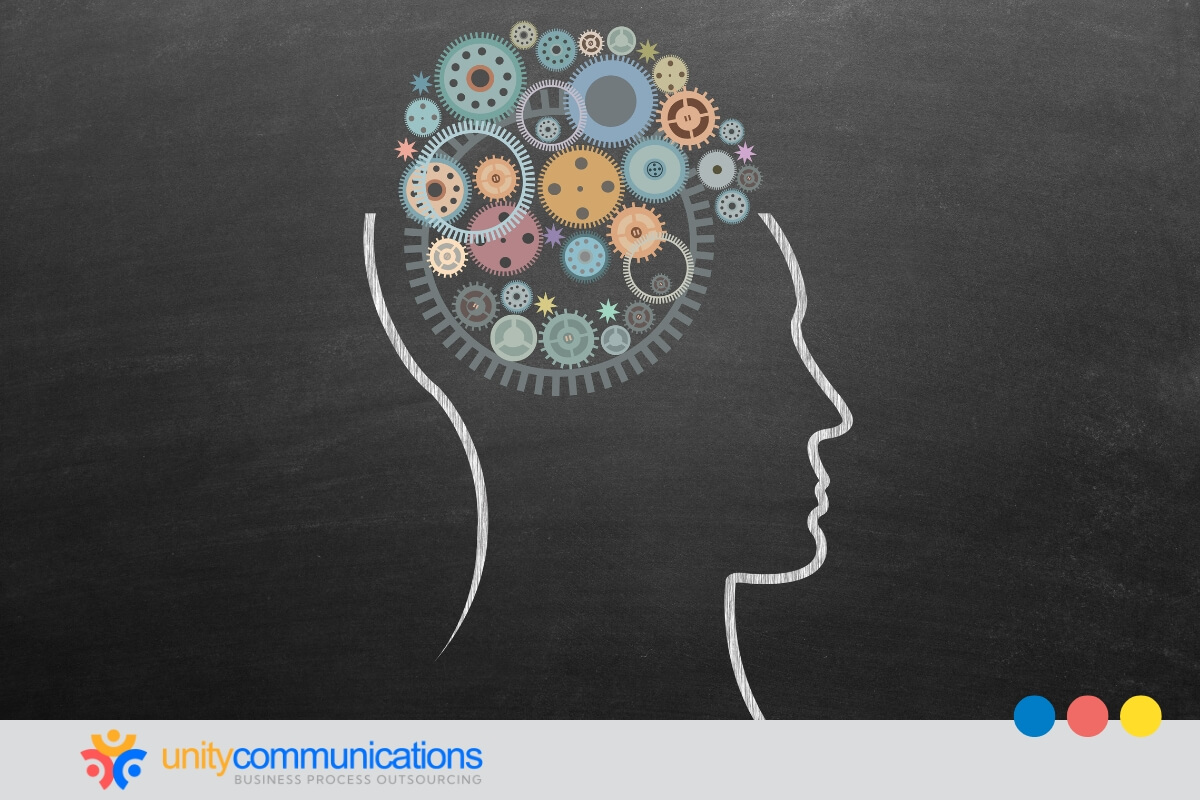
Visual content includes photos, infographics, videos, GIFs, and AR experiences. These elements do more than break up text—they deliver faster, clearer communication, boost engagement, and make content more memorable.
From an SEO standpoint, visuals enhance on-page time and reduce bounce rates. When optimized effectively, they also appear in image searches, carousels, and rich snippets—making your brand more discoverable.
With the right BPO partner, managing and scaling these visual assets becomes faster, easier, and more impactful. This content type can vary widely, each with its benefits:
- Images. Photos, illustrations, and high-quality visuals evoke emotions, enhance understanding, and break up text-heavy content.
- Videos. Whether tutorials or vlogs, videos engage audiences, boost organic traffic, and provide a high return on investment, according to 92% of video marketers.
- Infographics. These static visuals convert complex data into digestible information.
- Presentations. Slides and webinars combine visuals, videos, and audio to educate and engage viewers at their own pace.
- GIFs and memes. They inject humor and personality into the content. When used effectively, they can increase a copy’s virality.
- Charts and graphs. They present technical data in a clear, visual format that makes complex information easier to understand and analyze.
- Animations and motion graphics. They are excellent for storytelling, idea visualization, or product demonstrations.
- AR and VR. These are examples of cutting-edge visual content. Augmented reality (AR) overlays digital elements in the real world, while virtual reality (VR) creates immersive 3D environments for a unique user experience.
Visuals are impressive online marketing materials because they effectively communicate information. They quickly grab attention, simplify complex ideas, and convey messages faster than plain text. You can deliver information more powerfully and engagingly by integrating visual content into your strategy, particularly in social media.
The role of BPO in optimizing for image search
Despite their benefits, visuals can only increase the bottom line when optimized for search. But visual SEO is more complicated than you think.
Search engines can’t “see” images the way humans do. They rely on metadata to understand and rank them. Without optimization, even the most eye-catching visuals won’t appear in image search results or enhance your site’s SEO. They cannot drive organic traffic, improve user experience, and contribute to conversions or sales.
Although SEO delivers long-term gains, it is complex and time-consuming. Search engine algorithms, technology, and consumer behavior can change and affect rankings. For example, natural language processing (NLP) growth means choosing keywords based on user intent or context rather than exact matches.
What is BPO’s role in optimizing images for search? Partnering with a third-party BPO provider allows you to tap into specialized expertise to save time and focus on core goals. Outsourcing image SEO is a good idea as it brings precision and efficiency. BPO providers excel at:
- Managing large volumes of image files
- Accurately handling metadata, tags, and optimizations for maximum performance
- Quickly scaling operations and resources during seasonal spikes or large-scale projects
- Utilizing innovative tools and strategies to optimize image size, enhance image quality, and align with SEO best practices
- Aligning their techniques with industry trends and search algorithm changes
Working with a BPO company to optimize image search can boost your digital visibility and performance. Providers combine technical expertise, scalable resources, and up-to-date SEO practices to produce compelling, discoverable visual content.
Writing effective alt text for improved SEO
Alternative text (or alt text) is a core image search engine optimization component. It helps search engines understand an image’s content, making indexing and ranking in Google Images and other platforms easier. It also enhances accessibility by allowing screen readers to describe the content to users with visual impairments for a more inclusive online experience.
Write an optimized alt text with these tips:
- Clearly describe the image with relevant keywords. Avoiding overstuffing.
- Keep it short (1-2 sentences, 125 characters or fewer) and to the point.
- Include context. Match the alt text to the page’s topic for better indexing.
- Focus on why you chose the image, not every detail.
- Don’t use “image of” or “picture of,” but mention if it’s a logo, illustration, painting, or cartoon.
- Avoid repeating nearby text.
- End it with punctuation.
BPO teams can optimize for image search by systematically creating high-quality alt tags for thousands of images, improving accessibility and visibility.
Compressing images for faster page loads
Large image files can slow down your website, affecting search engine rankings and user experience. Optimizing images through compression can improve loading times between 10% and 24.29% in some tests.
Image compression techniques include:
- Lossless compression retains image quality while reducing file size.
- Optimized image formats use WebP or AVIF for smaller file sizes and better quality.
- Responsive images can adjust seamlessly to different screen sizes for an enhanced user experience.
A BPO vendor specializing in optimizing for image search can compress, test, and upload visual content to reduce bounce rates and improve SEO metrics.
Optimizing images for performance
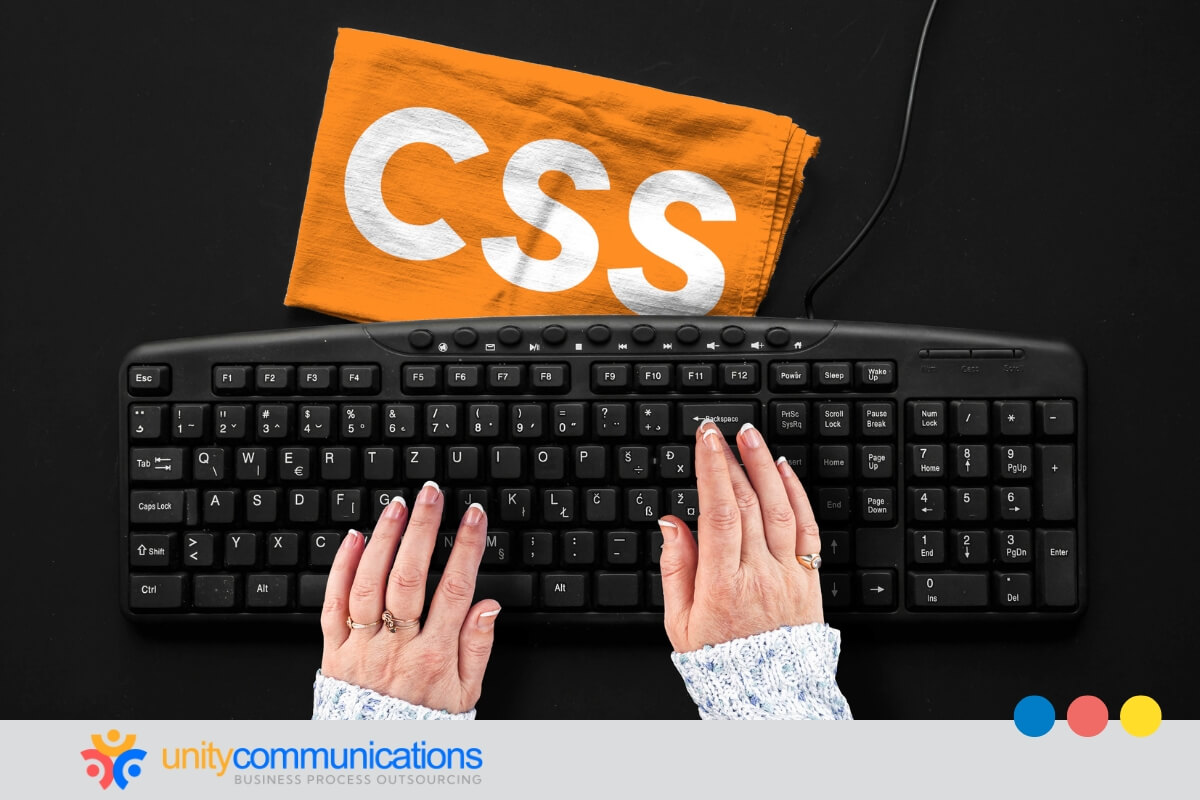
Websites use different image file formats, with PNG being the most popular due to lossless compression and a smaller file size than BMP.
Regardless of the format, high-quality images improve readability, evoke emotions, and boost engagement. However, if not optimized properly, they can slow load times and negatively affect the user experience.
Optimizing images enhances performance and supports sustainability by reducing data usage and improving search rankings. It also ensures that your website is accessible, particularly for users with assistive technologies, and scales visuals for various devices.
Leveraging CSS techniques can enhance image performance. For example, combining multiple images into one (CSS sprites) reduces HTTP requests, speeding up load times, especially for repetitive elements such as icons.
While optimization techniques are essential, validating their effectiveness is equally important. Always test images across different devices and screen sizes to determine whether they display correctly and provide a seamless user experience.
Using structured data to enhance image discoverability
BPO companies also use structured data or schema markup in optimizing image search. It gives search engines valuable context about the visuals to display them more prominently in search engine results.
When you add structured data, images can appear in rich snippets, carousels, and knowledge graphs, leading to higher click-through rates and increased organic traffic.
Structured data types for image SEO vary. Examples include:
- ImageObject adds metadata such as creator, license, and URL
- Product optimizes images in e-commerce product listings
- NewsArticle enhances the visibility of news images in Google News
If an image is part of an article or product, the ImageObject schema can be nested within the relevant schema type for better organization.
BPO marketers use tools such as Google’s Structured Data Markup Helper to create the schema and Rich Results Test to properly format the data. They prioritize accuracy to prevent Google from taking manual action.
Outsourcing structured data implementation to BPO teams offers businesses opportunities to tap into specialized skills, ensure precise execution, and rank high in image search.
Optimizing indexing and sitemap
Properly optimized file names and image sitemaps enhance indexing and improve your content’s chances of appearing prominently in image search results. How do you achieve these?
Write file names correctly
Well-structured image titles or file names are often overlooked in SEO but can affect Google Image ranking. Descriptive and keyword-rich names make it easier for search engines to identify an image’s relevance, ultimately improving rankings.
When writing file names:
- Use hyphens to separate words (e.g., golden-retriever-puppy.jpg).
- Avoid generic names such as IMG12345.jpg.
- Incorporate primary keywords naturally for better optimization.
A BPO expert in optimizing for image search can standardize and optimize file-naming conventions, which is particularly beneficial for businesses managing extensive image libraries.
Enhance discoverability with image sitemaps
Image sitemaps are vital in helping search engines find and index your visual content. Including metadata such as image URLs, captions, and licensing details provides search engines with valuable context, increasing your images’ visibility and driving traffic.
Check out best practices for creating image sitemaps:
- Integrate image data into your existing XML sitemap or create a dedicated image sitemap.
- Include essential details such as the image URL, title, caption, and licensing information.
- Submit the sitemap through Google Search Console for proper indexing.
- Regularly update the sitemap to reflect new additions or changes to your image library.
Optimizing file names and creating image sitemaps improve the indexing and visibility of your visual content in image search results.
Supporting mobile-friendly image optimization

With smartphones and tablets making up over 62% of global web traffic, a more responsive visual design is critical for enhanced user experience and SEO. This approach also aligns with Google’s mobile-first indexing, which prioritizes a website’s mobile version when indexing and ranking.
Key techniques for mobile optimization for images include:
- Responsive image tags. Use HTML tags to adjust images to different screen sizes.
- Lazy loading. Load images only when they come into view to save bandwidth and speed up page load times.
- Mobile-friendly formats. When appropriate, use formats such as scalable vector graphics (SVGs), which are resolution-independent and lightweight.
BPO firm’s experience and expertise in testing and deploying mobile-optimized images can align their tactics with current industry standards for maximum performance.
Tools BPO teams use for image search optimization
BPO providers use advanced tools in optimizing image search. These platforms can reduce file sizes, compress images without sacrificing quality, and resize or crop images for optimal viewing.
Popular applications include:
- Photoshop is a popular image editing tool that can crop, resize, and compress images. It also features various plugins for further optimization.
- TinyPNG and JPEGmini are online tools for compressing PNG and JPEG images without sacrificing quality. They use advanced compression techniques and are free for smaller file sizes.
- ImageOptim is a free desktop app that compresses images without losing quality. It supports PNG, JPEG, and GIF files and offers batch processing.
- Kraken.io is a web-based tool for compressing, resizing, and optimizing PNG, JPEG, and GIF images. Kraken.io also optimizes GIFs and features batch processing.
- Cloudinary is a cloud-based solution for storing, managing, and optimizing images. It supports different file formats and integrates with CMS platforms such as WordPress and Shopify.
- Google PageSpeed Insights analyzes image size and loading speed, providing actionable recommendations to boost page load times.
- SEMrush and Ahrefs help identify keyword opportunities to optimize alt text and captions, improving image search visibility.
These tools help BPO teams maintain high image quality and optimize performance in search engine results, enhancing both website performance and user experience.
The bottom line
Visual content is crucial for engagement. BPO teams specializing in optimizing for image search play a key role in maximizing their impact by boosting image visibility, improving rankings, and driving user interaction. They enhance your online presence by creating alt text, compressing images, and adding structured data.
Ready to make your visuals work harder? Let’s connect and explore how outsourced SEO services can boost your brand’s visibility and performance, without draining your team’s time.

